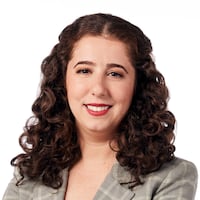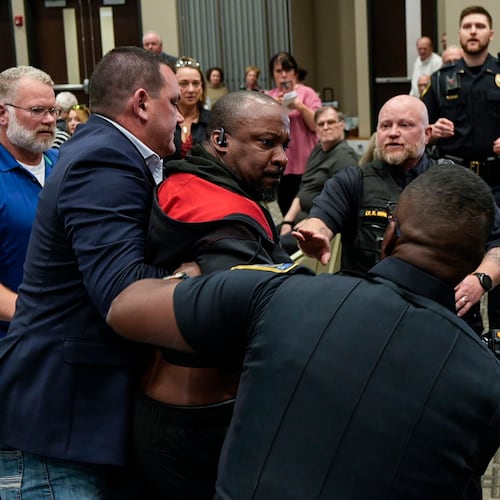Junel Dinkins couldn’t help but tremble at what she was seeing on the stage before her eyes on the great National Mall in Washington.
At the end of a 30-minute speech to mark the opening of the Smithsonian’s new National Museum of African American History and Culture, President Barack Obama walked over to 99-year-old Ruth Bonner, the daughter of Elijah Odom, a man born a slave in Mississippi.
Grabbing the hand that once touched a slave, the nation’s first black president helped Bonner ring a bell borrowed from the First Baptist Church of Williamsburg, Va., to officially and symbolically open the stunning museum.
Dinkins, a retired educator living in Douglasville, called it a seminal moment in American history.
“There are two things I never thought I would witness. First was the inauguration of President Barack Obama. I never thought I would witness this in my lifetime, although I thought it was possible,” Dinkins said. “And the other thing is to see an assembly of all the artifacts and all the historical symbols that are so important to us as African-Americans and to the history of America at large. We are all one nation, and we all contributed to making the nation the great place that it is.”
Thousands of people — including many Georgians — poured onto the mall Saturday for the official opening of the museum that has been a century in the making.
On Friday, Marietta’s Pamela Symonette said she took close to 30,000 steps, about 15 miles according to her fitness tracker, walking around Washington.
On a tour of the U.S. Capitol, she noticed only three items dedicated to African Americans. That all changed Saturday when she first set foot in the new museum.
“It was moving, stirring and emotional as an African-American to witness this,” said Symonette, wearing more comfortable shoes. “Now, for years to come, people can come here and experience and get that feeling of joy and pride. I wouldn’t have missed this moment for the world.”
Symonette and her crew of about 15 who made the trip up were among the lucky ones who were able to score the valuable tickets to visit the museum on the opening weekend.
Thousands of people came to Washington without tickets, and slim chances of getting them.
But that didn’t matter. People just wanted to be in Washington. To look at the new museum, so different from anything else on the mall with its ornamental bronze-colored metal lattice inspired by the three-tiered crowns used in Yoruban art from West Africa.
“We have been hearing about the architecture for a while,” said Garfield Peart, the past president of the Atlanta chapter of the National Organization of Minority Architects, which sponsored two buses to the opening. “The building itself is an amazing feat. The Yoruban motif and how that is articulated with the tapestry of metal work is amazing, and you can see how it translates across the mall. That is from an architectural view. But once you go inside, that is when the weight of this will hit you.”
For David Satcher, the former surgeon general of the United States, the weight of the museum has already hit him. And he hasn’t even been inside yet.
“Our history, as a people throughout the world, is an amazing history. But I think the history of Africans in America is special,” Satcher said. “You think about the struggles but also the accomplishments. To capture this in this amazing museum is really gratifying.”
Satcher has yet to visit the museum, although he made it to Washington on Friday for a special reception thrown by his alma mater, Morehouse College, to mark the museum’s opening.
“This has been a long time coming. It is about time,” said Eric Clark, a 1992 graduate of Morehouse who flew to Washington from St. Paul, Minn. “I truly hope that each and every one us takes the time to visit the museum and understand the impact that African-Americans have had on the country and still do today.”
Clark bumped into Rodney T. Cohen, whom he didn’t know before Saturday. Their bond created by being in the same fraternity, but cemented by being a part of history.
“As we have progressed as a society, this is very important for us to preserve the material culture and history of our community,” said Cohen, a visiting professor at Northern Illinois University and president of the National Association for Black Cultural Centers. He is also a graduate of Atlanta’s old Clark College, now Clark Atlanta. “Not only for us to remind ourselves where we have been, but also remind and educate other cultures.”
With Congressman John Lewis playing a key roll in the establishment of the museum, Georgia’s presence throughout the weekend was heavy.
The McIntosh County Shouters, a group of ring shouters from coastal Georgia who performed centuries-old music in the Gullah Geechee tradition, entertained visitors on the National Mall throughout the weekend as part of a three-day festival.
“It really brings it full circle to have this opportunity because it really shows the resilience of not only the Gullah Geechee people, but my family for having maintained such a tradition when being considered Gullah Geechee was a mockery,” said member Brenton Jordan. “It was something that was not considered to be even cool. Now everybody and their mama want to be Gullah Geechee.”
Which is exactly a point that Andra Gillespie, the director of the James Weldon Johnson Institute at Emory University, stresses about the importance of telling stories and filling in important gaps.
“The opening of a museum with this theme really tries to correct some of the holes in our understanding of American history. So for that reason, it is both symbolically and substantively important,” Gillespie said. “Oftentimes, American history is accused of overlooking the stories of underrepresented groups. So having a museum dedicated to discussing the African-American experience provides an opportunity for people to educate themselves about African-American history and its central role in American history. Often, it is taken for granted that black history is American history. You can’t tell the story of America without telling the story of all involved to build it.”
About the Author
Keep Reading
The Latest
Featured



